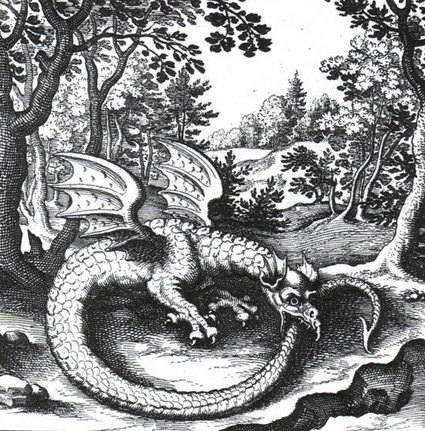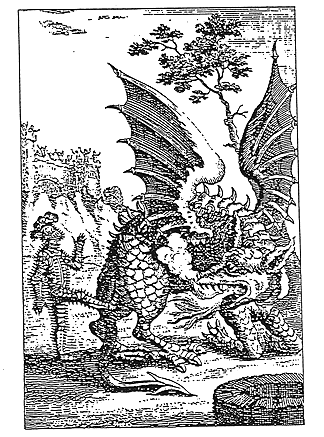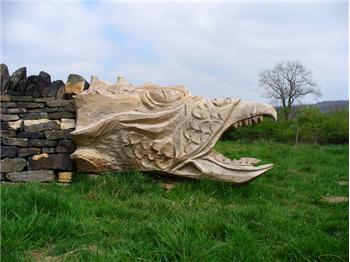In the Blue Corner… ‘More of More Hall’…
Nowadays if you were to pay a visit to the ‘House of Lords’ at Westminster in London, chances are that you would not feel particularly intimidated. You may feel a whole range of emotions depending on your political persuasion, but fear is unlikely to be one of them. Today’s ‘Lord’ is usually an old aristocrat, an ageing politician, a retired sport’s star or someone who is just plain rich. But this was not always the case.
The Lords of old were men of war; fierce and thegnly, they knew a thousand different ways to make you hurt. For some they were tyrants and conquerors, for others they were protectors and peacekeepers; but to one and all they were terrifying. And the most terrifying Lord ever to walk England’s green grass was the man they called More of More Hall.
New (old) Lords
Old (young) Lords
Moor Hall stood in in a valley between Wharncliffe Woods and the village of Bolsterstone near Sheffield, in the county which is presently called South Yorkshire. This region has always been a wild borderland; it was once the place where the great and legendary forests of Barnsdale and Sherwood merged together; 2000 years ago the Fourth Cohort of Gauls, a division of the invading Roman army, were stationed nearby to hold back the Celtic Britons who had been forced westward; 1000 years ago it lay on the border that separated the Saxon kingdoms of Mercia and Northumbria. The last Saxon Lord to control the region was Eorl (Earl) Waltheof who was beheaded in 1076 when he took part in a second rebellion against the Norman tyrant, William the Bastard (aka William the Conquerer), who had invaded England in 1066. After Waltheof’s death Sheffield was placed in control of Sir Roger de Busli who’s castle stood at Tickhill, near Doncaster. De Busli played a major role in one of the most terrible episodes in English history, the Harrying of the North.
And throughout this time, from the Romans to the Normans, it was the battle-axe rather than the ballot-box which decided the fate of the people. Needless to say it took a tough cookie to be a Lord in such a wild region…
More of More Hall was definitely a tough cookie. He was said to be a foul-mouthed, hard-drinking, womaniser; a mountain of a man with a reputation to match his stature. Legend has it that when he was young he was thrown from a horse. The villagers laughed to see a great knight beaten by a mere mare. This angered Moor of Moor Hall, so he grabbed the animal by it’s main and tail and he swung it around and around and around until it was dead. Not satisfied with killing the horse he had it cooked and he ate it as if it were nothing more than a Southern-Fried chicken. He took bite after bite after bite until all that was left on his plate was the horse’s head – now that’s ‘finger lickin’ good’! Nobody laughed at More of More Hall after that.
WWF/WWE 'Kane' - he'd be no match for More of More Hall!
In the Red Corner… ‘The Dragon of Wantley’…
If you feel sorry for More’s horse then perhaps you’d also like to spare a thought for the poor people of nearby Wantley; for a great wurm had made it’s home in the crags that surrounded their village.
The Dragon of Wantley was a truly horrible beast; in it’s cavernous mouth it had four and forty iron fangs the size of soldiers bayonets and twice as sharp; all over it’s monstrous body were iron scales as wide as dinner plates and twice as thick; it’s wings were like that of a bat only of much greater size and twice as leathery; and it’s fearsome fiery breath was as hot as sulphur and twice as smelly.

It is said that the beast ate most of Wantley, caring not for what it chewed. To satisfy it’s monstrous appetite it would devour all that stood in it’s way – meat, veg and mineral! The wurm ate cattle, trees and people as if they were nowt but Pot Noodles; as the famous poem says ‘even houses and churches were to him geese and turkeys‘.
3 Kids and some puppies = a snack for the Dragon of Wantley
The only things that the dragon could not digest were a few boulder sized stones which it spat out in disgust. These can still be seen today…
stones at Wharncliffe Crags
The villagers fought bravely, but try as they might they could not wound the beast for it’s iron scales. Their efforts merely angered the dragon and so anything that was not eaten was burnt to a cinder out of spite. The villagers could only watch in horror as their once beautiful Wantley was slowly reduced to dust and devastation.
Let’s get ready to rumble…
In desperation the villagers turned to More of More Hall; for he himself was more beast than man. They told him of the dragon and how it was impervious to injury. They implored him to help and said that he could have anything his heart or head desired.
It turned out that More of More Hall desired a smiling, raven-haired, maid of sweet-sixteen with snow white skin and lips of cherry red to anoint him with oil at night and dress him in the morning – and to think I have trouble asking for a pay rise!
a raven haired beauty by Charlsie Kelly
The villagers agreed to his terms.
More of More Hall knew well the legend of Achilles which teaches us that nothing that walks this green earth is truly impregnable; everything that takes breath has a weakness. He did not know the dragon’s weakness, but he knew a way to find it. He took his knightly armour to Sheffiled and bade the town’s skilled smithies – the best in the world – to cover his metal suit with 6 inch long spikes of steel. It is said that when the smith’s had finished with More of More Hall’s armour it was so spiky that he looked like a hedgehog or some Egyptian porcupig.
a porcupig - not to be confused with Porky Pig
And so it was that a spiny More of More Hall rode bravely into battle and – thought most – to certain death.
Seconds Out, Round One…
If you, like me, are a bit of a nerd then you’ll be pleased to hear that brain is a better asset in battle than brawn (though both is obviously better) – and More of More Hall knew that this dragon was more stinker than thinker. The wurm’s first dumb move was to try and and bite a steel spiked knight. The 6″ spikes bit back and for the first time in it’s life the dragon felt pain. It was so angry that it spun around six times, drew back it’s beastly head and took a large intake of breath.
More of More Hall knew the dragon’s mind and he jumped into a nearby well just as the monster spewed fire from it’s aching mouth. The water in the well boiled and bubbled and the knight was tossed around like a fart in a jacuzzi, but he remained unburnt and alive. Enraged the dragon plunged into the water and beast and man entwined, locked in mortal combat.
The water doused the monsters fearsome breath and the spiky armour saved the knight from being bit; so beast and man – albeit a beast of a man – were evenly matched. For two whole days the battle raged with neither gaining the upper hand. And then, by chance and perseverance, More of More Hall found the dragon’s Achille’s heel. For the sake of taste or modesty some storytellers would have you believe that the dragon’s weak spot lay at it’s throat or in the small of it’s back, but I, for sake of accuracy in case you were ever to meet such a beast in the flesh, will tell the tale in it’s original form. Tired and close to death More of More Hall mustered all his remaining strength and kicked as hard as he could landing his spiky foot square on the dragon’s arse. “Murder, murder”, the dragon cried, “Alack, alack, for grief. Had you but missed that place, you could have done me no mischief.” But it was too late for the dragon who’s life was undone by a boot to the bum – and so from that day to this giving a good whooping is known as ‘kicking ass’.

Six times more the beast spun around and then, with a gasp of breath and a puff of smoke, the dragon promptly died. So ends the tale of the Wantley Wurm and the valiant knight known as More of More Hall.
The End
Living the Legend…
The best way to understand and enjoy British Folk-Tales is to visit the places which inspired them. The lair of the Dragon of Wantley is situated at Wharncliffe Crags, North of Sheffield and the Peak District National Park (in 1951 the Peak District was designated Britain’s first national park). Anyone with the courage of a knight – and good walking shoes – can visit the beast at Wantley Wood, an important conservation site run by the Woodland Trust. Some 16 miles East of Wharncliffe is the town of Conisbrough who’s castle and surrounding countyside inspired Sir Walter Scott’s classic heroic tale, “Ivanhoe” – which mentions The Dragon of Wantley in it’s opening chapters. Another dragon was said to reside in nearby Conisbrough Cliffs and an observant visitor can still find the rocks that were stained red by the dragon’s blood; but that is, as they say, another story 😉


This version of the story was adapted from the Yorkshire poem and folk-tale known as ‘The Dragon of Wantley’ as told in David Clarke’s “Strange South Yorkshire” (Sigma Press, 1994) and Katherine Briggs’ “British Folk-Tales & Legends” (Routledge Classics 2002).
A clean version of the 17th century poem can be read here and the story behind the story can be found here. Bear in mind though that the crest of the Anglo-Saxon More family was a dragon and this pre-dates the poem by over 600 years – so what is the real truth behind The Dragon of Wantley?





2 comments
Comments feed for this article
August 2, 2009 at 12:59 pm
SLAM DOWN!!! - ‘Wantley Wurm’ vs ‘More of More Hall’ - TO THE DEATH!!! | WWE Fan
[…] post by Wynfrið Wynn […]
August 17, 2009 at 10:20 am
Ian Potter
You might just enjoy this in a couple of weeks time… It’s an idea I’ve been wanting to get on Radio 4 for years, that we finally made this April.
n Search Of The Wantley Dragon
Sunday 30 August
4.30-5.00pm BBC RADIO 4
Poet Ian McMillan is on a quest to find the “Dragon of Wantley”. In his search, he uncovers long-forgotten, violent disputes, a knight clad in locally made armour, pantomimes, operettas and the dragon’s den.
The Dragon Of Wantley is a 17th-century comic poem that was a literary sensation for more than 200 years. It’s a bawdy tale, told in rhyming couplets, about a Sheffield knight who defeats a dragon that’s devouring everything, even children.
In its day, the Yorkshire-based story was as famous as that of Robin Hood – but more than 100 years ago it vanished without trace.
Ian’s pursuit of the Wantley Dragon leads him to discover a hero protected by local steel and a dragon that might actually be a dubious landowner. The trail takes him to meet the dragon’s family and he also learns of vandalism and threats in the 1590s, and hears how the story reached Covent Garden, becoming not only an operetta, but also a circus performance and several pantomimes.
Ian’s quest soon takes him out to the dragon’s den – an eerily quiet cave hidden on a little-known Yorkshire hillside.